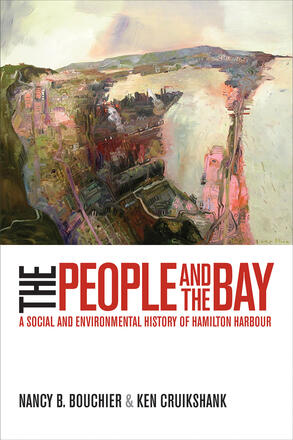
The People and the Bay
A Social and Environmental History of Hamilton Harbour
This engaging history brings to life the personalities and power struggles that shaped how Hamiltonians used their harbour and, in the process, raises broader questions about the relationship between people and nature.
Description
This book explores the complicated relationship between Hamilton Harbour and the people who came to reside on its shores. From the time of European settlement through to Hamilton’s rise as an industrial city, townsfolk struggled with nature, and with one another, to champion their vision of “the bay” as a place to live, work, and play. The authors bring to life the personalities and power struggles, drawing on a rich collection of archival materials. Along the way, they challenge readers to consider how moral and political choices being made about the natural world today will shape the cities of tomorrow.